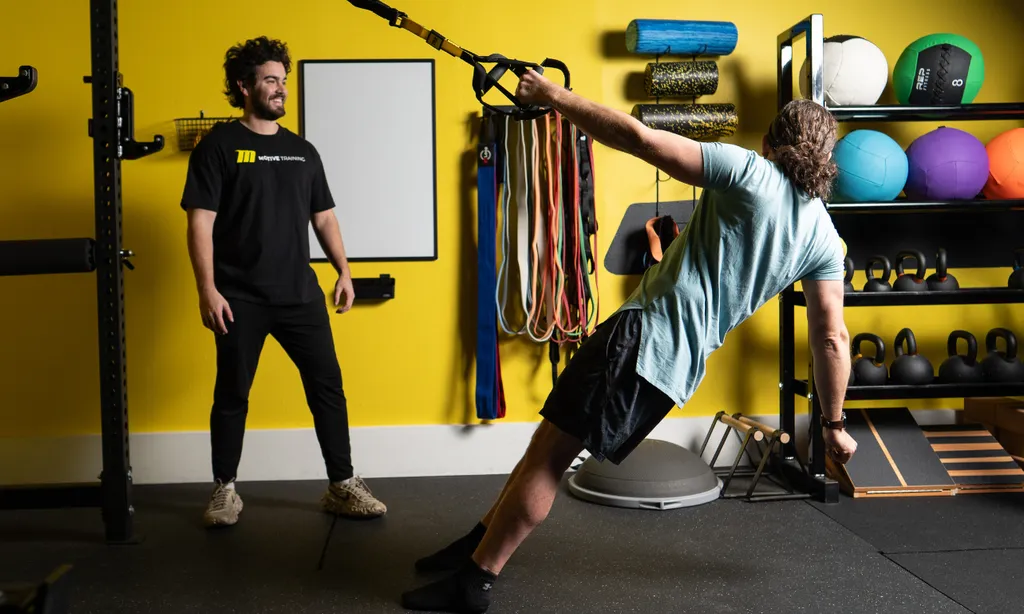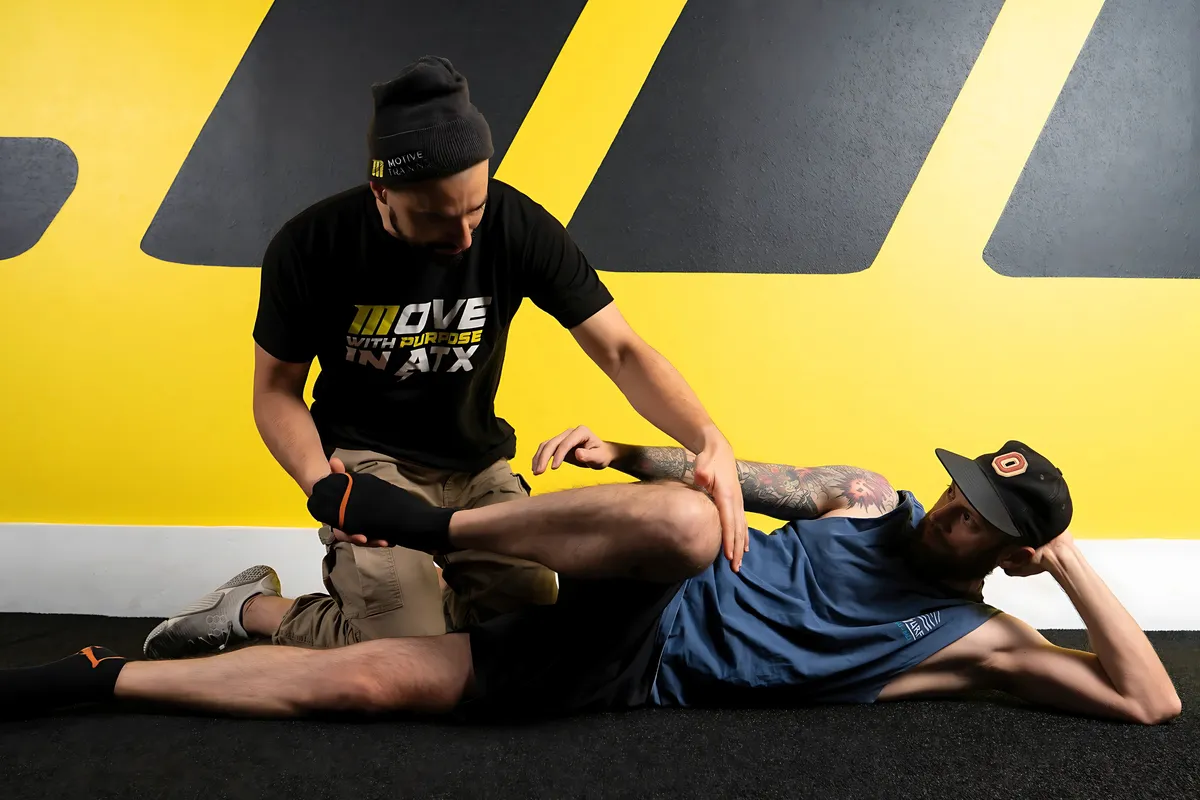Integrating Calisthenics and Functional Range Conditioning into Your Routine
March 21, 2025 | Functional Range Conditioning

Calisthenics is the art of using body weight to build strength, flexibility, and endurance. Unlike traditional weightlifting, calisthenics relies on movement patterns such as push-ups, pull-ups, dips, squats, and levers to develop full-body control and functional strength. While effective, it lacks a structured approach to improving joint integrity and mobility, which is where Functional Range Conditioning (FRC) comes into play.
FRC enhances movement capacity by expanding the joint range of motion, strengthening connective tissues, and reinforcing control at end ranges. Most people training in calisthenics hit a plateau when their mobility limits their ability to perform certain movements, such as deep squats, handstands, or front levers. By incorporating FRC, athletes gain better access to these positions while reducing the risk of chronic overuse injuries that are common in bodyweight training. Without addressing mobility deficits, progress in calisthenics will always be capped by structural limitations, no matter how strong an individual becomes.
Benefits Of A Calisthenics Workout Plan
Improved Strength And Muscle Tone
Calisthenics develops relative strength, which is the ability to control your body through space in relation to your body weight. Movements like push-ups, pull-ups, and dips emphasize pushing and pulling mechanics, while single-leg exercises such as pistol squats enhance unilateral leg strength. Since calisthenics engages multiple muscle groups, it promotes balanced muscle development and increased endurance, translating to real-world strength applications. When paired with FRC, these benefits amplify, as mobility restrictions no longer limit movement efficiency.
One key aspect of strength in calisthenics is how much force you can generate and how well you can control it through different ranges of motion. FRC’s focus on end-range control ensures that athletes don’t just become strong in the mid-range of a movement but are also able to generate force in deeper positions, such as the bottom of a dip or a squat. This translates into better overall movement competency, more resilience against injury, and more sustainable long-term practice.
Enhanced Flexibility And Mobility
While calisthenics builds impressive strength, it often neglects joint-specific mobility. Many athletes struggle with deep squats, handstands, or levers due to their poor range of motion. FRC improves this by focusing on controlled articular rotations (CARs), PAILs/RAILs, and end-range isometrics to expand and reinforce joint workspace. The result? Increased flexibility, better control in extreme positions, and greater resilience under load.
A major issue in bodyweight training is the misconception that flexibility alone is enough to access advanced movements. Many athletes stretch consistently but fail to strengthen those new ranges of motion, leading to instability and a higher risk of injury. FRC bridges this gap by enhancing joints in these expanded ranges, making them more usable and functional in training. Instead of passively increasing the range of motion, FRC allows athletes to actively control their movements within those ranges, making them far more effective in skill-based calisthenics training.
Integrating FRC Into Your Calisthenics Routine
Understanding Functional Range Conditioning
Understanding and implementing Functional Range Conditioning (FRC) is a game-changer for calisthenics athletes. FRC is not just about stretching; it’s about actively strengthening joints through their full range of motion. By incorporating FRC principles, calisthenics athletes can identify and eliminate weak links that hinder performance, empowering them to take control of their training and reach new levels of performance.
Most calisthenics practitioners don’t realize that mobility restrictions are caused by tight muscles and weak or poorly controlled joints. If a joint lacks control at its end range, the nervous system will limit movement as a protective mechanism, preventing athletes from accessing certain positions. FRC provides the necessary inputs to strengthen and reinforce joint control, allowing smoother, more efficient movement patterns. This is why incorporating FRC into calisthenics is essential—not just as an add-on but as a fundamental component of training.
Key FRC Techniques For Calisthenics
- Controlled Articular Rotations (CARs) – Daily CARs improve joint health by moving them through their full range, enhancing control and reducing stiffness. Regular CARs help maintain joint integrity and provide daily assessments of movement capacity.
- PAILs/RAILs (Progressive And Regressive Angular Isometric Loading) – These techniques improve tissue strength at end ranges, allowing for deeper squats, stronger levers, and more stable handstands. By training the joint capsule, PAILs/RAILs ensure long-term mobility improvements rather than just temporary increases in flexibility.
- Kinetic Stretching – Unlike passive stretching, kinetic stretching strengthens muscles while improving flexibility, which is ideal for advanced calisthenics skills like splits or back bridges. This method ensures that strength accompanies flexibility, reducing the likelihood of overstretch injuries.
- Isometric Holds At End Ranges – Holding strength-based positions at joint extremes ensures stability and control for movements like planches and front levers. Since many calisthenics skills require control in extreme ranges, isometric training is crucial to integrating FRC into bodyweight training.
Common Mistakes To Avoid In Calisthenics Workouts
- Neglecting Mobility Work – Lack of flexibility leads to poor movement quality and higher injury risk. Too many athletes assume strength alone will get them through complex movements, but progress will always be limited without mobility.
- Skipping Isometric Training – Strength at end ranges is crucial for stability in advanced calisthenics movements. If a joint lacks control in an extended position, it will compensate elsewhere, leading to inefficient movement and potential injury.
- Ignoring Joint-Specific Training – Wrist, elbow, and ankle health dictate performance. Prioritize joint integrity. Wrist injuries are one of the most common issues in calisthenics due to the high load on the hands during movements like push-ups and handstands.
- Overlooking Recovery – Overuse injuries are common in bodyweight training. Incorporate active recovery and tissue work. FRC techniques can be used as recovery tools to maintain joint health and prevent chronic issues.
- Advancing Too Quickly – Poor mechanics lead to compensations and potential setbacks. Progress gradually. Strength should be built within a well-controlled range before moving into advanced variations.
Conclusion And Final Thoughts
Integrating FRC into your calisthenics routine is not just about unlocking a new level of performance; it’s about building a foundation for long-term, sustainable progress. By focusing on strength, flexibility, and joint health, athletes can refine their skills, move with more control, and build a resilient body capable of handling any challenge. This long-term perspective should instill confidence in the reader about the effectiveness and sustainability of their training.
Many people approach bodyweight training with a mindset of just performing harder progressions, but true mastery comes from refining movement patterns and eliminating weak links. FRC offers a system to assess and correct these limitations, making every calisthenics movement more efficient, powerful, and safe. By mastering these movement patterns and eliminating weak links, athletes can experience a profound sense of accomplishment and take their training to new heights.
Written by:
 Motive Training Staff
Motive Training Staff
We’ll teach you both how to move with purpose so you can lead a healthy, strong, and pain-free life. Our headquarters are in Austin, TX, but you can work with us online by signing up for KINSTRETCH Online or digging deep into one of our Motive Mobility Blueprints.

